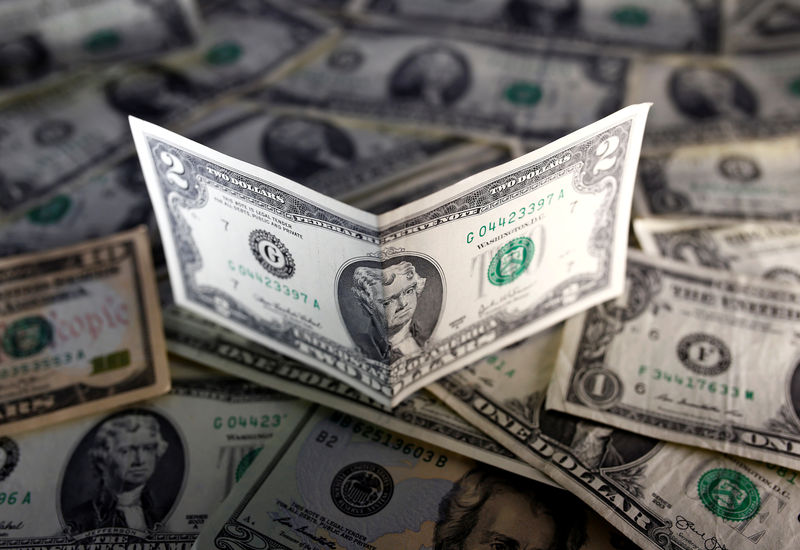By Saikat Chatterjee
LONDON (Reuters) - The dollar fell toward a 10-day low on Thursday against its rivals as concerns grew the United States may be heading for a sharp economic slowdown next year despite the Federal Reserve raising interest rates for the fourth time in a year.
Although U.S. policymakers have said they may raise interest rates three times by early 2020, the U.S. bond yield curve -- a widely considered indicator of future recessions -- flattened to 10 basis points and just a shade above a 11-year low set earlier this month.
An inversion of the bond yield curve is considered a sign of economic recession with longer-term yields falling below shorter-dated maturities and those concerns triggered a global selloff in risky assets such as stocks and high yielding currencies like the New Zealand dollar
"We are seeing some messy markets in currencies this morning and the dollar is struggling to gain traction after the Fed decision," said Alvin Tan, a currency strategist at Societe Generale (PA:SOGN) in London.
The dollar fell 0.4 percent (DXY) against its rivals to 96.68 and within a whisker of a 9-day low of 96.554 hit in the previous session.
Indeed, while the Fed's 'dot plots' now signal two, instead of three, rate hikes for next year, the market is unconvinced and is barely pricing in one increase in a reflection of heightened market concerns of the state of the global economy.
While the Fed raised interest rates by a quarter point, China's central bank rolled out a policy tool to spur lending to small and private firms in a move that some analysts termed as equivalent to a targeted rate cut.
The Japanese yen
The euro led gainers (EUR=EBS) in London trading with the single currency advancing nearly half a percent against the dollar at $1.1428.
The single currency was supported by news Italy had struck a deal with the European Commission over its contested 2019 budget
and some solid trade data this week.
Sterling
Elsewhere, Sweden's currency jumped more than one percent against the dollar on Thursday after the central bank raised interest rates for the first time in more than seven years.
(GRAPHIC: U.S. yield curve and recessions - https://tmsnrt.rs/2R8aGix0
